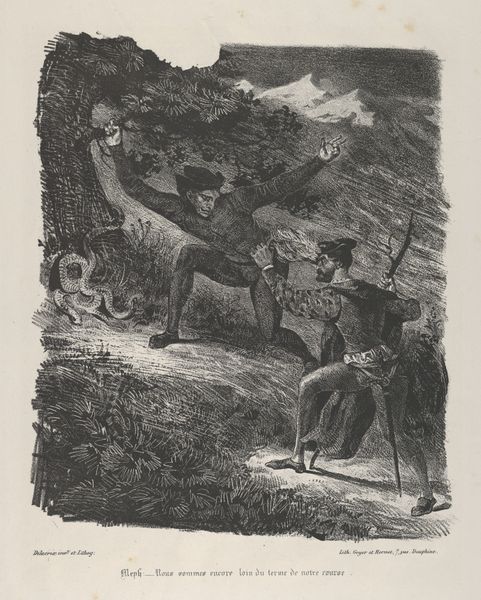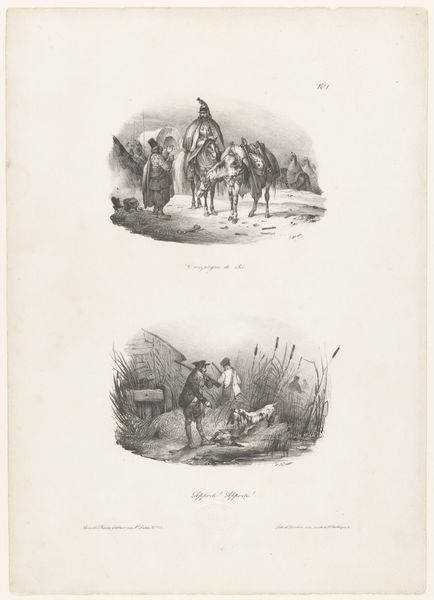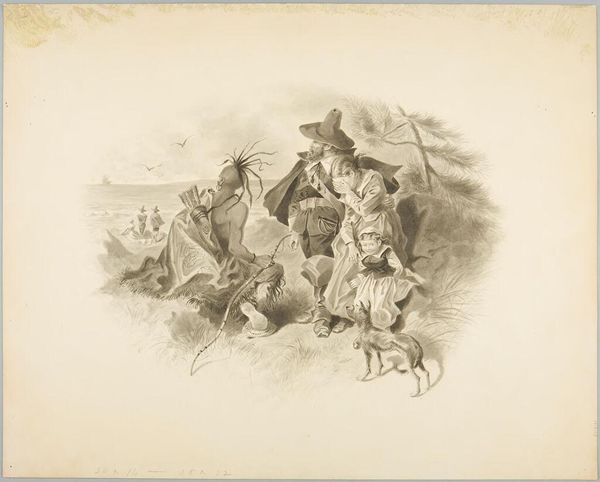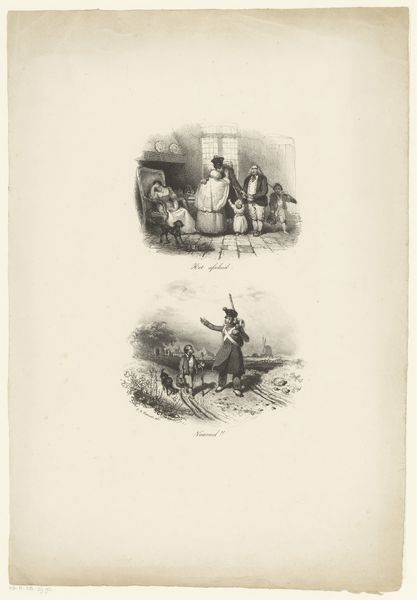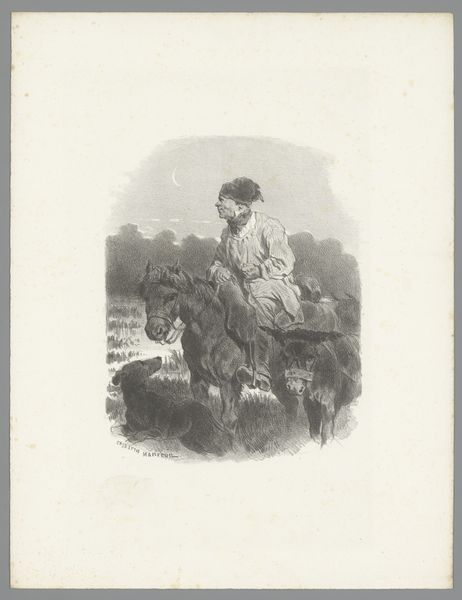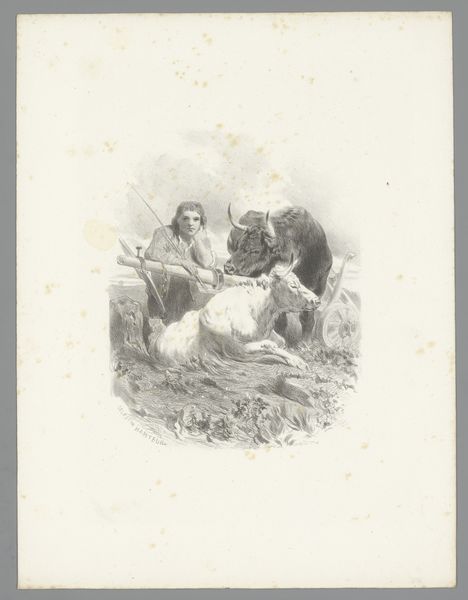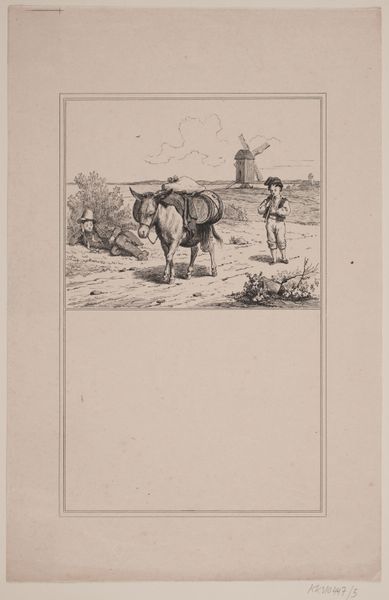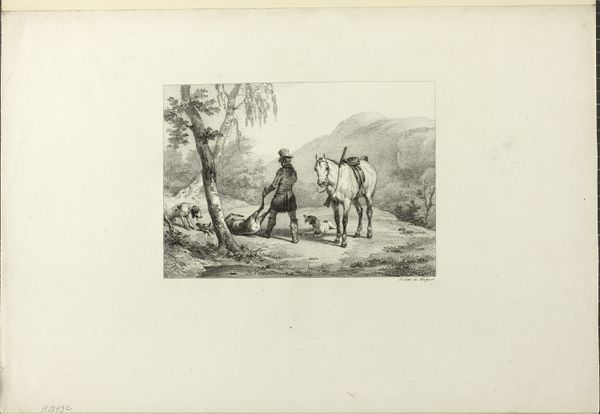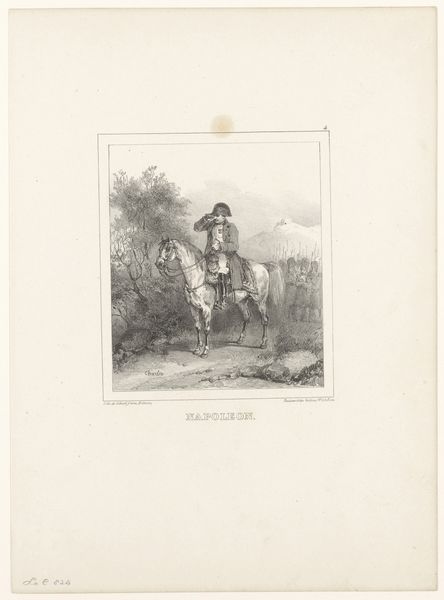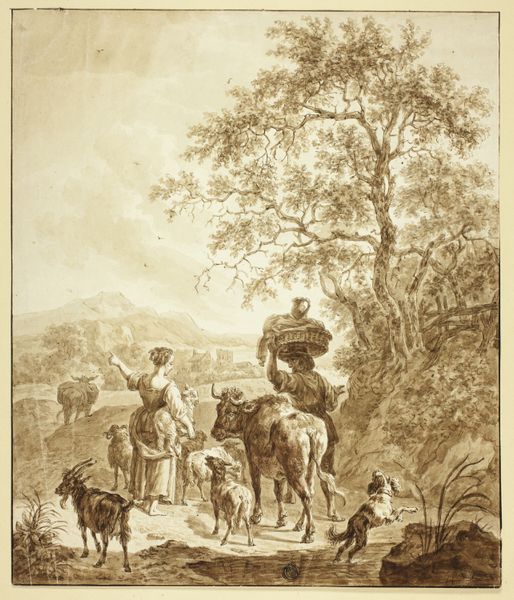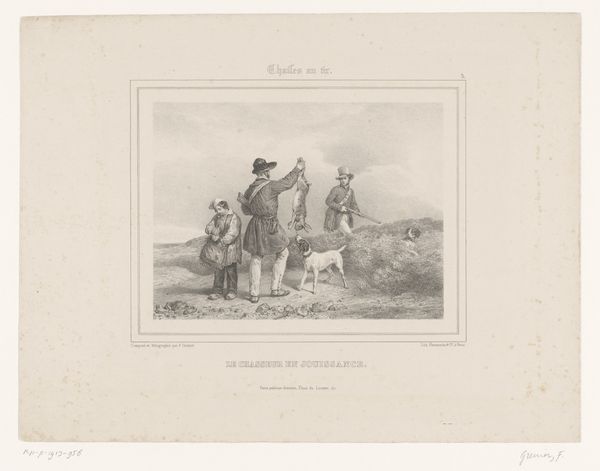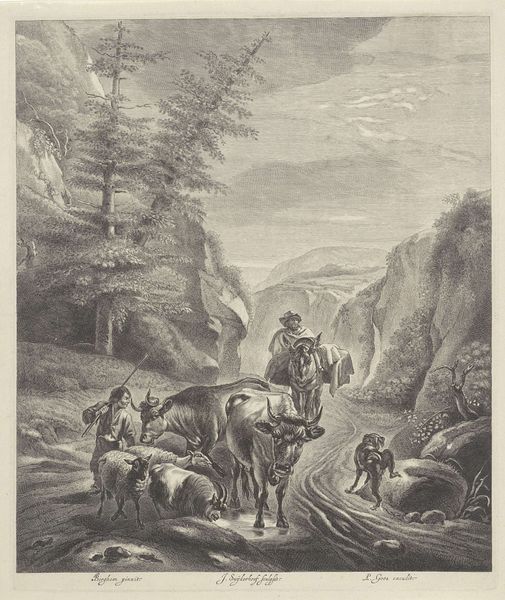
Dimensions: height 352 mm, width 269 mm
Copyright: Rijks Museum: Open Domain
Curator: Here we have Willem Hendrik Stam’s "Gezelschap in de duinen," or "Company in the Dunes," an etching made sometime between 1841 and 1874, currently residing in the Rijksmuseum. Editor: It feels… windswept. All delicate lines and hints of figures. I get a definite sense of distance, both in terms of the landscape and the people depicted. Like a memory, filtered through time. Curator: Stam was working during a period of significant shifts in Dutch society. As Romanticism began to fade, artists started grappling with depicting modern life, though here we still see echoes of Romanticism in the appreciation for nature and picturesque scenes. The dunes, a particularly Dutch landscape, offered a space apart from the growing urbanization. Editor: Absolutely, that distance I mentioned? It's almost cinematic. Like a frame from a very refined, slightly melancholic film about class and longing. I am curious though; what’s up with all those people with the spy glasses on top of the hill? Curator: The people gathered on the small vista at the top add another layer to our reading. This reflects a rising middle class with more leisure time and growing interests in tourism. They can gaze outward, observing, possessing the landscape visually. But are they really connecting with it? Or are they observing some spectacle beyond? Editor: That contrast between engaging and simply “possessing” the view resonates a lot. It is like they’re at the movies of the outside world, looking at something distant to impress people. Do you think Stam aimed for social commentary? Curator: Stam certainly invites us to consider the role of observation and participation. Also, remember prints at this time functioned within a market—decorative, but also informative. These scenes celebrated Dutch identity while offering commentary, too. Editor: Fascinating how much the quiet detail can hold. Suddenly it’s not just a pretty landscape. I find that even the texture of the etching adds another layer: like sand being blown across the image itself. A perfect example of Dutch nostalgia. Curator: Agreed. The technique perfectly conveys both the beauty and the ephemeral quality of the dunes, and by extension, the society that sought solace and meaning there. Editor: Exactly. Gives you something to think about, while enjoying the view… or the memory of it.
Comments
No comments
Be the first to comment and join the conversation on the ultimate creative platform.
